The oldest two-headed animal is a good 120 million years old. The fossil of this ancient lizard discovered in 2007 proves that animals with multiple heads are an ancient phenomenon. There are two variants – animals with two heads (bi/dicephalus) and animals with two faces on one head (diprosopus). These are all instances of congenital cephalic disorders, i.e. genetic disorders that lead to anomalies in embryos. Is pollution of natural resources playing a key role in increasing the number of such cases? There is yet no conclusive answer to the debate.
Frank and Louie, a gray feline with two mouths, two noses and three eyes, turned 12 years old and is the world's oldest, living two-faced cat.
a two-headed albino rat snake. The eight-year-old oddity of nature was known affectionately by fans worldwide as "We" died of natural causes in 2007.
a two-headed albino Honduran milk snake is shown in Ridge Manor, Fla. Parker, a University of Central Florida biologist, says that most two-headed snakes have typical coloration. Albino snakes don't have dark pigmentation in their skin. Albino milk snakes appear in bright shades of red, orange and white. The biologist says two-headed snakes have been documented to live as long as 20 years in captivity. But with two brains giving commands to a single body, Parker says the snake would have a difficult time surviving in the wild.
An unnamed two headed bobtail lizard, a type of skink, is seen at its new reptile park home at Henley Brook on April 22, 2010 in Perth, Australia. The two-headed reptile was rescued from Coogee by the Park and appears to be doing well, despite the life expectancy of such mutated births to be short. It eats from both heads but the larger head has also tried to attack the smaller one, and its movement is difficult as both heads control its back legs. It also has a healthy sibling without any mutation. Bobtails give birth to live offspring, rather than laying eggs.
Janus, the Geneva Museum of Natural History’s two-headed Greek tortoise, is presented to the press and the public during the official celebration of its 10th birthday on 05 September 2007.
Australian scientists discovered a two headed blue tongue lizard in Sydney on 17th January 2001.The lizard named Trixie has one eye on the far side of each of her heads, as well as a third eye where the two heads connect, and one blue tongue

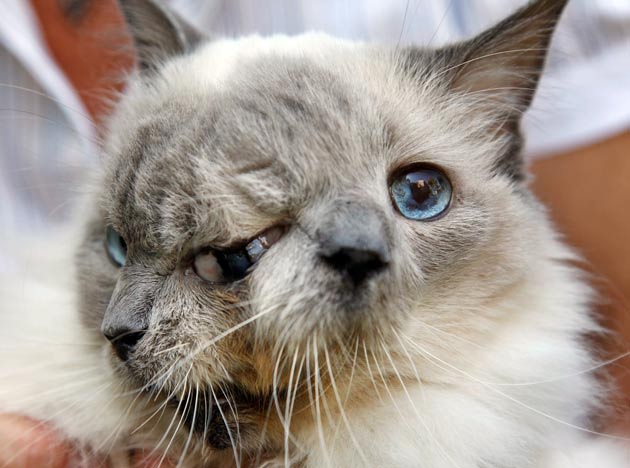
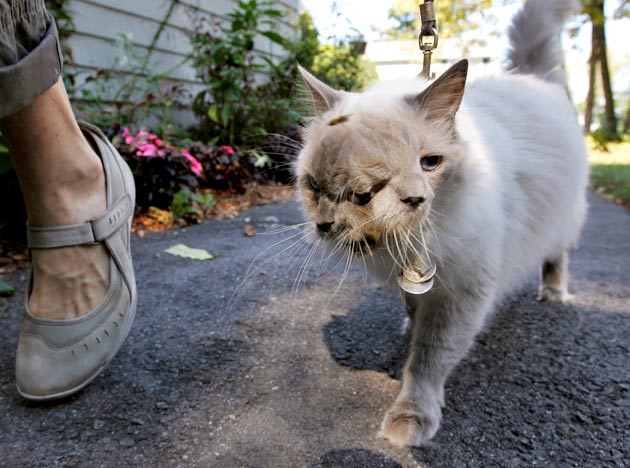
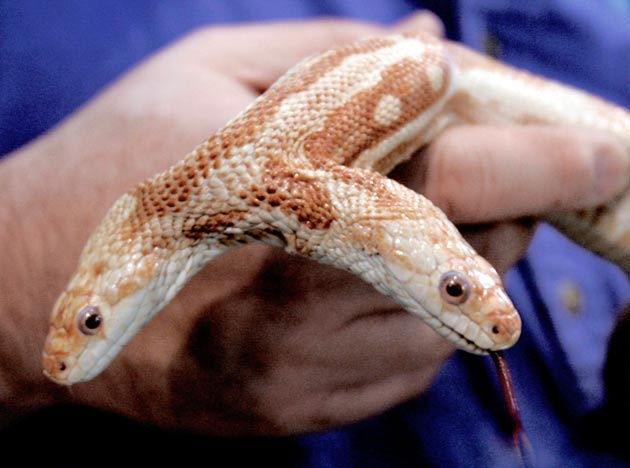
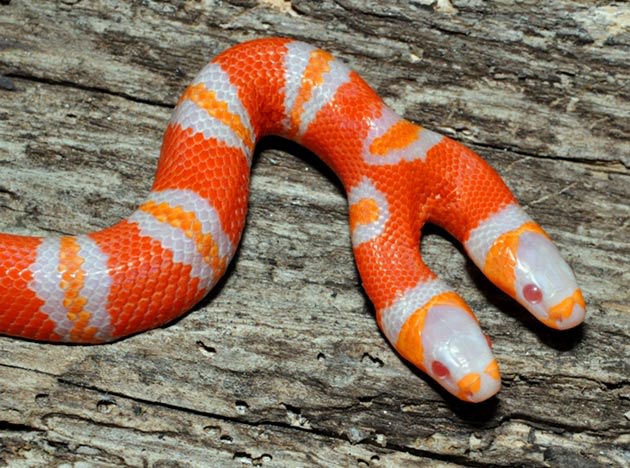
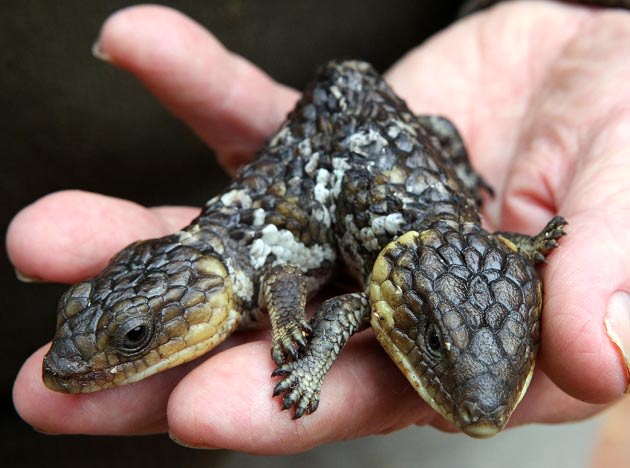
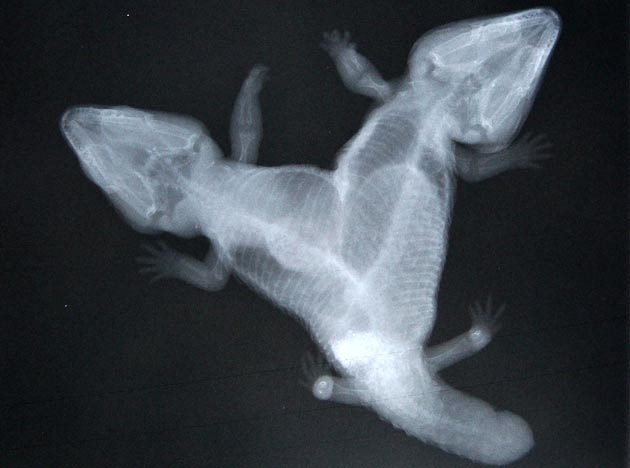
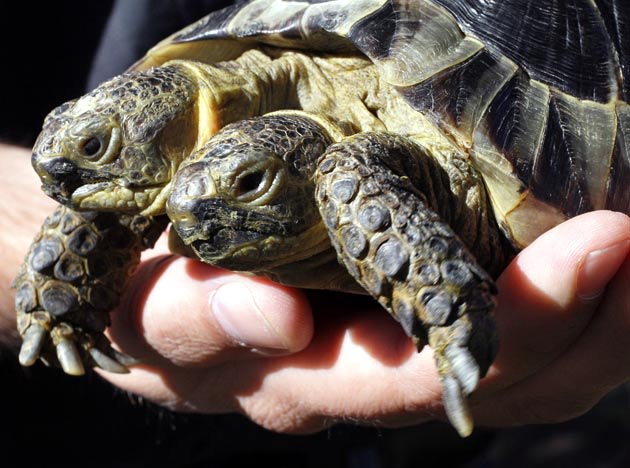
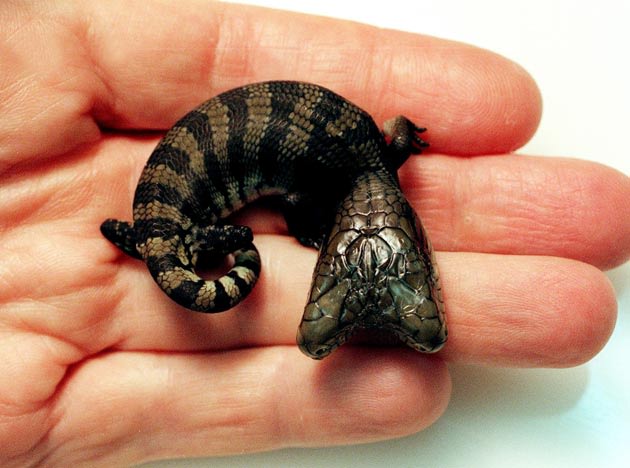
No comments:
Post a Comment